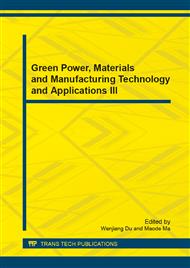p.1081
p.1087
p.1093
p.1098
p.1101
p.1106
p.1110
p.1114
p.1118
An Intelligent Transportation Systems Model Based on Multi-Agent Technology
Abstract:
Intelligent transportation system based on multi-agent, become a important method, also is to solve the complex traffic problems. In the geography of the property of the agent in the heterogeneous environment cause implementation difficulties such as interoperability requirements, make the agent of unity between software platforms as a potential infrastructure. This paper puts forward a model and the more intelligent transportation system based on SOA. The model includes four major parts: infrastructure, services, agency, and coordination agent. Elements The model of the agent into different levels and groups, including organization agent, regional control agent, agent, road section road intersection vehicle control agent, the acting to complete different function and goal. Based on the SOA multi-agent technology, can realize the cross-platform loosely coupled, and interoperability and heritage reuse in distributed and heterogeneous network traffic system.
Info:
Periodical:
Pages:
1101-1105
Citation:
Online since:
January 2014
Authors:
Price:
Сopyright:
© 2014 Trans Tech Publications Ltd. All Rights Reserved
Share:
Citation:


